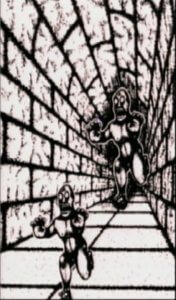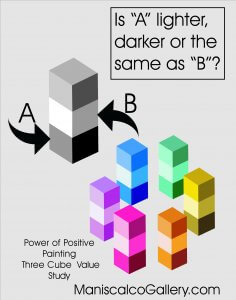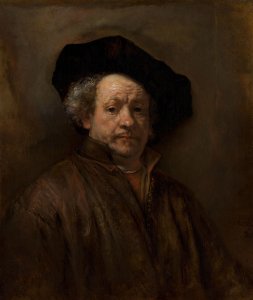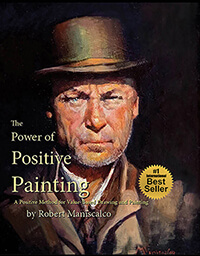
Inattentional Blindness – Falling for the Trick
We’ve all seen them on the internet. I’m talking about those amazing chalk drawings on sidewalks that look 3-D. Or those optical illusions that make things appear differently than they really are. These are examples of what psychologists call Inattentional Blindness. IB is a relatively new term for an ancient phenomenon in which our minds are tricked, hiding the truth of what we are seeing, because we are so focused on seeing what we want or expect to see. We willingly shut out the truth of what we are looking at in favor of what we believe we are seeing. This also shows up in politics, by the way, where two people can look at the same events and reach completely different conclusions. Alt truth is not actual truth. Basically, humans see only what they want to see.

Street art by Edgar Mueller
The drawing on the left is an example where you would swear the figure in the “rear” is gargantuan compared to the figure in “front,” when in fact they are drawn exactly the same size and proportion. It only appears larger. As representational artists, we cannot fall for such tricks. Just imagine if we did. We would make the rear figure larger because that is how it appears to us because of the context, created by the one-point perspective lines. Changing the actual sizes of the figures, which in reality are the same, would most certainly destroy the dramatic impact of the drawing. And yet, this is exactly what artists do, every day.
Artists are those among us, who are most willing to suspend their disbelieve, in pursuit of their lofty ideals. Unfortunately, over zealousness causes us to fall for the myriad visual traps the world may lay at our feet. Take those darn chalk street drawings all over the internet. We all want to believe there really is a magic world under the pavement, as in this famous Edgar Mueller street art piece (right). These are truly amazing works of art. But perhaps, more to the point, they are amazing feats of magic. In magic, the magician is the master of the secret trick. She works hard to keep her audience in the dark so they will look on with amazement. Once the audience discovers the secret, the show is over. And so is the magician’s career.
Artists need to include themselves in the secret magic behind the trick.

If you can’t tell whether A is lighter, darker or the same as B, then you might need to read my book.
We marvel at how much depth there appears to be in a Rembrandt painting. And yet I highly doubt whether people would appreciate his genius any less if they new the secret of what made his work look so 3-D. But certainly, as representational artists, it behooves us to at least try to understand what is going on in a chiaroscuro painting, even if we will never paint like Caravaggio. As the masters of the universe in our artworks, artists need to include themselves in the secret magic behind the trick.
I have found in forty years of teaching, the single biggest obstacle to my student’s success, is their stubborn desire to hold onto what they think they are seeing, instead of giving themselves over to the model and learning how to see objectively. Unique among professionals, artists are often the last to learn the secrets of their own trade. The reason is that it requires them to reject what they think they are seeing in favor of what is actually in front of them. Many are quite intent on defending, even cultivating, their inattentional blindness, and will fight to the death protecting their right to see what they want.

Rembrandt (Rembrandt van Rijn), Self-Portrait (Painting: Oil on canvas, 31 5/8 x 26 1/2 in. (80.3 x 67.3 cm))
I got a call today, while writing this blog in fact, from an old friend who was having trouble enjoying a portrait an art student did of her when she was in college. The arm coming toward the viewer, was foreshortened. But instead of trusting and accepting the counter-intuitive forms in front of her, the art student made it look like there was a tiny arm sticking out of my old friend’s torso. This critical error in drawing was keeping her from enjoying an otherwise pleasant painting. And she wanted me to fix it, which I politely refused to do, explaining that it is unethical for artists to work on other artists’ work. I suggested she simply learn to live with it, perhaps allowing it to represent the fond memory of posing for an art class. See it as a piece of archeology, nostalgia, youthful exuberance, reminding her of days gone by. Or she could just continue to see it as an eye soar and return it to its place in the storage room. That is a choice she has to make for herself.
Artists must learn to have faith in what they actually see.
Actually, trying to “fix” foreshortening is a common drawing error for students, one that can easily be corrected with some honest observation skills and learning to trust what one actually sees, resisting the temptation to “fix” or “improve” upon it. In fact, most problems in figure drawing, like foreshortening, can be resolved by training the eye to see objectively. Artists must learn to have faith in what they actually see.
 But for many representational artists, who’s job it is to accurately convey three dimensional objects on a two dimensional surface, there is tremendous resistance to learning how to see objectively. That is what my book, The Power of Positive Painting is all about: how to move beyond this inattentional blindness, to see objectively. Objectifying our reference is a crucial step in being able to describe the truth of what we see. Artists don’t have words to explain errors in perspective, proportion or value. But critics do, and I dare not use them in this G rated blog. Sadly, for many artists, repeating the same mistakes is a way of life. I guess that’s why they call them crazy artists: nice people who make the same mistakes, expecting different results.
But for many representational artists, who’s job it is to accurately convey three dimensional objects on a two dimensional surface, there is tremendous resistance to learning how to see objectively. That is what my book, The Power of Positive Painting is all about: how to move beyond this inattentional blindness, to see objectively. Objectifying our reference is a crucial step in being able to describe the truth of what we see. Artists don’t have words to explain errors in perspective, proportion or value. But critics do, and I dare not use them in this G rated blog. Sadly, for many artists, repeating the same mistakes is a way of life. I guess that’s why they call them crazy artists: nice people who make the same mistakes, expecting different results.
But with a little training and a sincere willingness to look objectively at what we are drawing and painting, we can avoid the same mistakes that separate the amateur from the professional. My book takes the reader, step by step, on a journey into the honest observational process. The book focuses our attention where it needs to be, allowing the creative juices to enter through the back door of our mind, turning the tables on inattentional blindness. Before we can draw and paint what we really see we must first learn how to see it by changing our focus. The Power of Positive Painting method introduces a new way to see; it’s the fastest way for artists to cut through the noise and overcome their inattentional blindness. Who knows, maybe politicians could learn a thing or two from professional artists.
